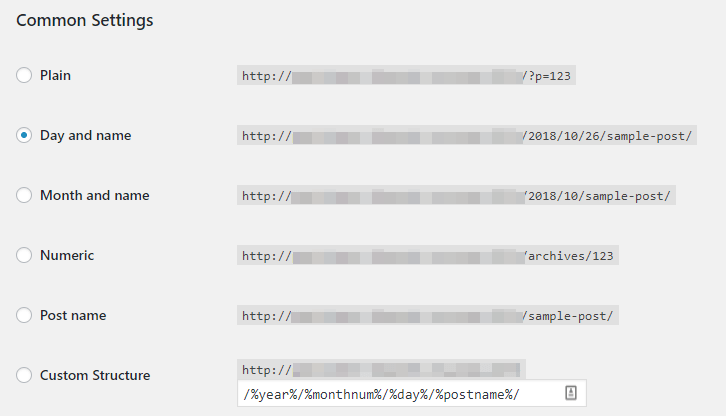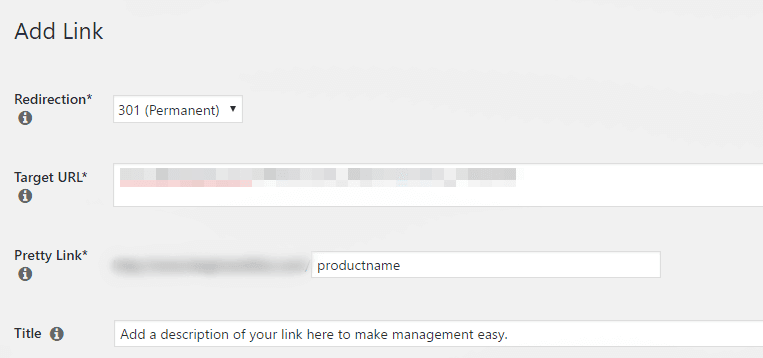Por que é importante tornar seus links do WordPress memoráveis (e como fazer isso)

Conteúdo
There are a hundred things to take care of when you’re running a website. One essential task that often gets overlooked is optimizing your links so they’re as memorable as possible. After all, the ‘uglier’ your links are, the less likely it is that people will remember them.
Along with improving your website’s traffic, memorable (or ‘pretty’) links can make your site look a lot more professional. Plus, WordPress provides you with plenty of options to customize your URLs, so there’s no excuse not to do it.
In this article, we’re going to talk about why it’s important to work on your website’s link structure. Then we’ll show you three ways to create more memorable links in WordPress. Let’s get to work!
Why It’s Important to Create Memorable Links
Before we go any further, let’s look at a few examples of ‘ugly’ links and better alternatives. Here are two URLs we’d consider to be unwieldy:
- www.youdomainname.com/blog/p=?56436
- www.yourdomainname.com/article/256623
From a practical standpoint, both of those URLs work just fine. The problem is that they’re not easy to remember or type. More importantly, someone who sees one of these links won’t have any idea what to expect once they click on it.
Com isso em mente, uma alternativa melhor seria algo como isto:
- www.yourdomainname.com/blog/create-memorable-links
Isso URL relativamente curto is easier to remember, and looks more professional. Plus, it tells you exactly what you’ll find by clicking on it, which makes it more useful and trustworthy.
Unfortunately, the link structures WordPress uses by default look a lot more like the first two examples. However, it’s not hard to start using better URLs on your site. In the next few sections, we’ll explain how to do just that.
3 maneiras de criar links mais memoráveis no WordPress
O processo de criação de links atraentes e úteis começa antes mesmo de você criar seu site. Na verdade, ele começa no momento em que você seleciona um nome para o seu site.
1. Comece escolhendo um nome de domínio forte
Escolhendo um nome de domínio is one of the first things you’ll do when you want to launch a website. Your choice of domain matters a lot, because it sets the tone for your site and helps to establish your branding. Plus, that name will make up the first part of all your site’s URLs, which makes it essential that you choose something both unique and easy to remember.
For example, if you’re thinking about launching a website to sell t-shirt designs, you might want to look for inspiration from some of the most popular sites in that niche:
- threadless.com
- spreadshirt.com
- rushordertees.com
All those are excellent domain names, and they have a few things in common. They tell you exactly what the website is about, they’re relatively short, and they’re also memorable without being complex or hard to spell.
That last criteria is most important. When you’re considering a domain name for your site, try not to choose something too complicated. ‘Short and sweet’ results in a domain name that helps you construct strong URLs for your site.
2. Altere as configurações do link do WordPress
Out of the box, WordPress features a rather ugly URL structure. When you start creating new posts and pages, their URLs will look something like this:
- www.youdomainname.com/p=?2
That’s anything but memorable, and tells you nothing about the content of the page the link leads to. Fortunately, you can easily alter sua estrutura de permalink do WordPress.
Para fazer isso, navegue até a seção Configurações > Permalinks tab in your site’s dashboard. There, you’ll see a list of structures you can choose from:

We’re going to save you some time, and recommend that you stick with one of these three structures:
- Dia e nome
- Mês e nome
- Nome da postagem
Nome da postagem is our favorite option by far, as it’s the clearest and most descriptive. However, if you also want to include each post’s date in its URL (for example, if your site focuses on news articles), feel free to choose either of the first two options instead. Keep in mind that you can also shorten the permalinks for individual posts as you write them, so don’t worry about long titles.
Finally, it’s worth mentioning that if your site has been around for a while, a lot of people don’t recommend changing its permalink structure. That’s because altering your existing posts’ links can negatively impact your Search Engine Optimization (SEO) if you don’t fazer isso com segurança.
Ideally, you’ll change your WordPress site’s default permalink settings as soon as you set it up. However, if your site is already well established, there are other ways to deal with poor-quality URLs.
3. Make Your Links ‘Pretty’
If you want to customize your links beyond the default settings WordPress offers, you’re going to need to use plugins. This can be helpful if you want to shorten your links as much as possible, or create custom links for third-party websites (just to name two examples).
To do this, we’d recommend using our own Plug-in Pretty Linksque permite que você configure redirecionamentos simples para qualquer link que desejar:

To get started, you’ll need to assinar um de nossos planosque lhe dará acesso a uma chave de licença que pode ser usada para ativar o plug-in.
Once it’s up and running on your site, you can navigate to the Link bonito > Adicionar novo link tab in your dashboard. There, you’ll see a few options:

Você pode escolher um 301 (Permanente) e, em seguida, insira o URL que você deseja alterar no campo URL de destino campo. Abaixo disso, crie o novo URL no campo Link bonito field. It can be whatever you’d like – just keep in mind our advice about making it short, clear, and memorable.
Once you save this link, you can use the new, pretty URL wherever you’d like, both on and off your site. It will redirect users to the page specified by the Target URL link. You can repeat this process for as many links as you’d like, which lets you customize all of your site’s URLs in any way you choose.
Conclusão
Links may seem like an element you don’t need to pay much attention to. However, they perform a vital function on every website. If your links are hard to remember, unprofessional, or convey no useful information, they’ll hardly convince people to click through to your content.
A boa notícia é que otimizar seus links no WordPress é bastante simples. Para recapitular, aqui estão três dos melhores métodos:
- Comece escolhendo um nome de domínio forte.
- Personalize suas configurações de permalink do WordPress.
- Crie links encurtados usando o Pretty Links plugin.
Do you have any questions about how to create memorable links on your website? Let’s talk about them in the comments section below!